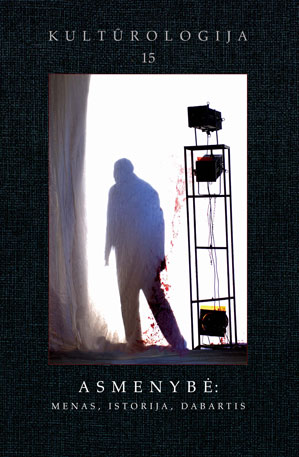Fragmento menas: Eimunto Nekrošiaus režisūra 1991-1995 metais
The Art of the Fragment: Eimuntas Nekrošius' Directing 1991-1995
Author(s): Rasa VasinauskaitėSubject(s): Cultural history
Published by: Lietuvos kultūros tyrimų
Keywords: art of the fragment; Eimuntas Nekrošius
Summary/Abstract: This article analyses the aesthetics of director Eimuntas Nekrošius, which has changed since 1991. A fragmented stage action model and stage image construction is clear in the plays The Nose by Nikolai Gogol, Alexander Pushkin's Small Tragedies, and Anton Chechov's Three Sisters put on by Nekrošius in 1991-1995, which provides a concrete state of being of the artist after Lithuania regained its independence. The poetic images of the director in his performances take on contrasting shapes and actualise the dramatic and grotesque sensations of reality. The new structure of Nekrošius' performances, new stylistical changes of his directing, compared to the work of Lithuanian summaries and foreign directors of the time, are evidence of the penentration of postmodern theatre trends in the Lithuanian stage and its transformation with individual means of artistic expression. The different "shape" of Nekrošius' theatre forced critics to listen. It wasn't possible anymore to adapt the usual methods of writing about them to his performances - which was to follow the director's metaphors and describing the associations raised by the performance and experiences. The new form of Nekrošius' theatre were most likely linked with the director's different view towards actors, and towards the whole system of the performance. Having been born in the mind of one person, this system functioned according to his power alone. Centralising this power was the power of the imagination, capturing viewers with images that were hard to put into words and forcing one not to get to know or feel, but penetrating the depths of the subconscious. In analysing and reconstructing Nekrošius' performances in the period of 1991-1995, the author focuses attention towards the perception of the performances at the time, comparing the performances of other directors of the time, emphasizing the surface dynamics and physicalness of the action that appeared in Nekrošius' work, and poliphonicness of the different themes revealed during the performances like the trope of situational comparisions. The director's freedom of stage modeling, variety of signs, and encouragment of the viewers' emotional distance with its performers during the performance are all named the new quality of Nekrošius' theatre.
Journal: Kultūrologija
- Issue Year: 2007
- Issue No: 15
- Page Range: 406-426
- Page Count: 20
- Language: Lithuanian

